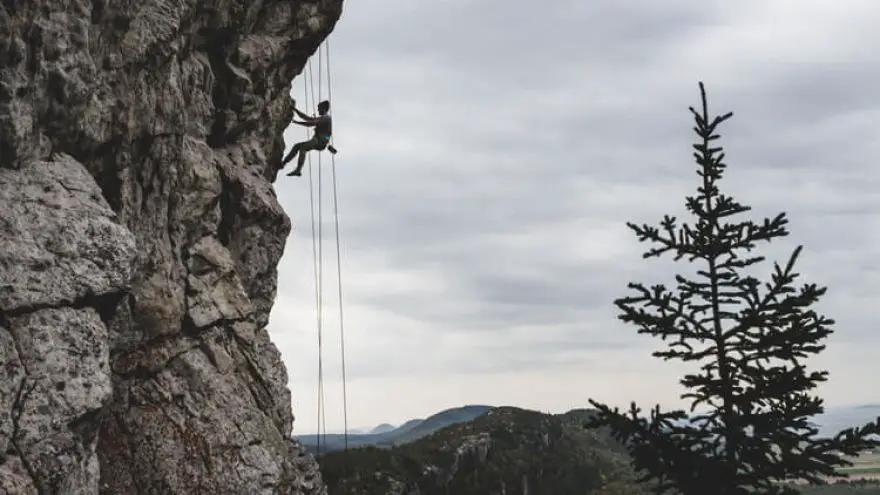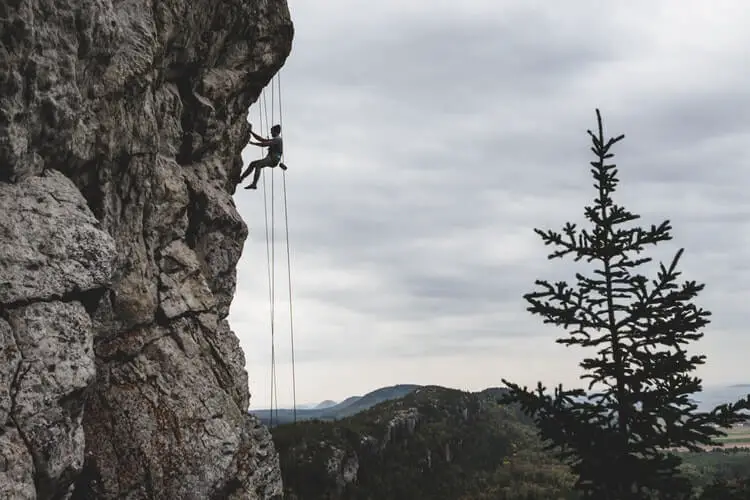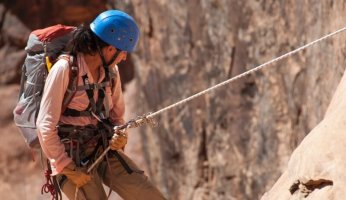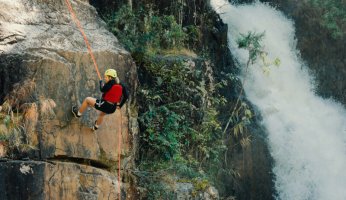Rock Climbing Etiquette
 Rock Climbing Etiquette
gearweare.net
Rock Climbing Etiquette
gearweare.net
The sport of rock climbing has seen a recent upsurge in popularity. Gyms exist seemingly everywhere these days and crags are the most crowded they have ever been. All of this means a lot of new people venturing into unknown terrain where they do not know the rules. Venturing into a delicate ecosystem, like rocky slopes, there is a certain climbing etiquette you need to pay attention to.
Although it may never be explicitly stated as someone gets into rock climbing, there is etiquette within climbing culture that every climber is expected to understand from day one. Although these rules exist within the climbing gym, they become exponentially more important when a climber begins to explore the outdoors. The exploration of real rock places climbers deep within fragile ecosystems, where Leave No Trace principles to apply. Furthermore, many climbing areas have rich histories and cultures, with differing rules that need to be respected. Show that you respect other climbers and the sport that you love by following the climbing rules of etiquette outlined below.
Table of Contents
The 7 Leave No Trace Principles
Leave No Trace is a set of rules developed by the Forest Service in the 1960s to provide guidelines to a growing population of people spending time on federal land. These principles should be abided by every time anyone spends any time on natural land – they are designed to help us mitigate our impact, leaving an area as similar to the state it was found in as possible. The rules are as follows:
- Plan Ahead and Prepare – You are responsible for bringing everything you need to be comfortable and come home from where you are going. Also, know where you are going and how long you will be there ahead of time and let people at home know.
- Travel and Camp on Durable Surfaces – Stay on the path and don’t set up your camp anywhere that isn’t already a campsite. Also, walking and camping one eroding ground.
- Dispose of Waste Properly – This includes poop, which must be buried 6 inches deep in a cathole a minimum of 200 feet from water, trails, and campsites, or packed out.
- Leave What You Find – No picking wildflowers or taking cool rocks home.
- Minimize Campfire Impacts – Fires must be confined to a fire pit. Avoid burning any hazardous material, including plastics.
- Respect Wildlife – This means keep a distance and don’t feed animals.
- Be Considerate of Other Visitors – Don’t forget that you’re not the only outside enjoying nature. Keep noise to a minimum, don’t play loud music, and keep your stuff contained to a reasonable area. Another thing to consider is your dog, who should be kept on a leash at a crag with other people.
Respect the Rules of an Area
As stated earlier, different climbing areas have different rules. Start digging a little deeper into the history of climbing and you will find numerous examples of conflict arising due to the breaking, sometimes unknowingly, an unspoken or legal rule. One example of this is the bolting of lines that can be protected with removable gear. When this is done, more times than not, those bolts end up getting cut. Another example that has more to do with legality than climbing ethics, would be the cutting down of a tree to clear a path for a climb without first getting the proper permissions.
Although these examples are extreme, they illustrate the need get to know a climbing area that you are new to in a way that is more than topographical. Two great ways to learn about a new crag are to talk to the locals, who will be happy to help you orient yourself and can tell which climbs are their favorites, and to read the area descriptions and info in the guide book. If there isn’t a guidebook for where you’re going, look the area’s page up on Mountain Project. Also, make sure to read up on the rules of the area you will be in. Many climbing areas are located in federal and state parkland, where certain specific rules may apply. These rules will often be posted at a park’s entrance, so be on the watch for these signs and always make sure to stop and read them.
 Don’t Take Fixed Gear
Don’t Take Fixed Gear
Those who are new to sport climbs may not know that climbers sometimes leave quickdraws on routes they are projecting. If you see this you are welcome to climb on the draws, but do not take them down – the owner of that gear knows exactly where they are and is expecting them to be there when they return. Likewise, some climbs have been equipped with fixed-gear, including permadraws and quick-clip anchors up top. These things are there to make climbing enjoyable for everyone and are not free for the taking.
All this being said, if you happen upon gear that looks like it has been abandoned, that booty is yours. In fact, lost gear is an integral part of a trad rack.
Brush Off Tick Marks
As helpful as they may be to you, tick marks are an eyesore. Also, ticks sometimes lead other climbers to a beta that doesn’t work for them, making brushing a tick after you add it the polite thing to do. Excess chalk should also be removed from a climb.
Don’t Hog the Crag
It is not polite to post up on a climb for hours on end. This is true under all circumstances but especially when the area is crowded. Instead, groups are expected to sequentially work on a pitch until everyone has done it. It is understood that with a large group this can take a long time. Large groups should be willing to let other people tag in if they are going to be climbing it for more than an hour or two. This principle of tagging in also goes for projects.
It’s also important not to emotionally hog the crag. Although we all understand that weird noises that can involuntarily emerge while moving through a crux, try to keep the volume low and the cursing to a minimum – a lot of climbers have kids. Also, don’t through a temper tantrum after failing to send. Just don’t.












